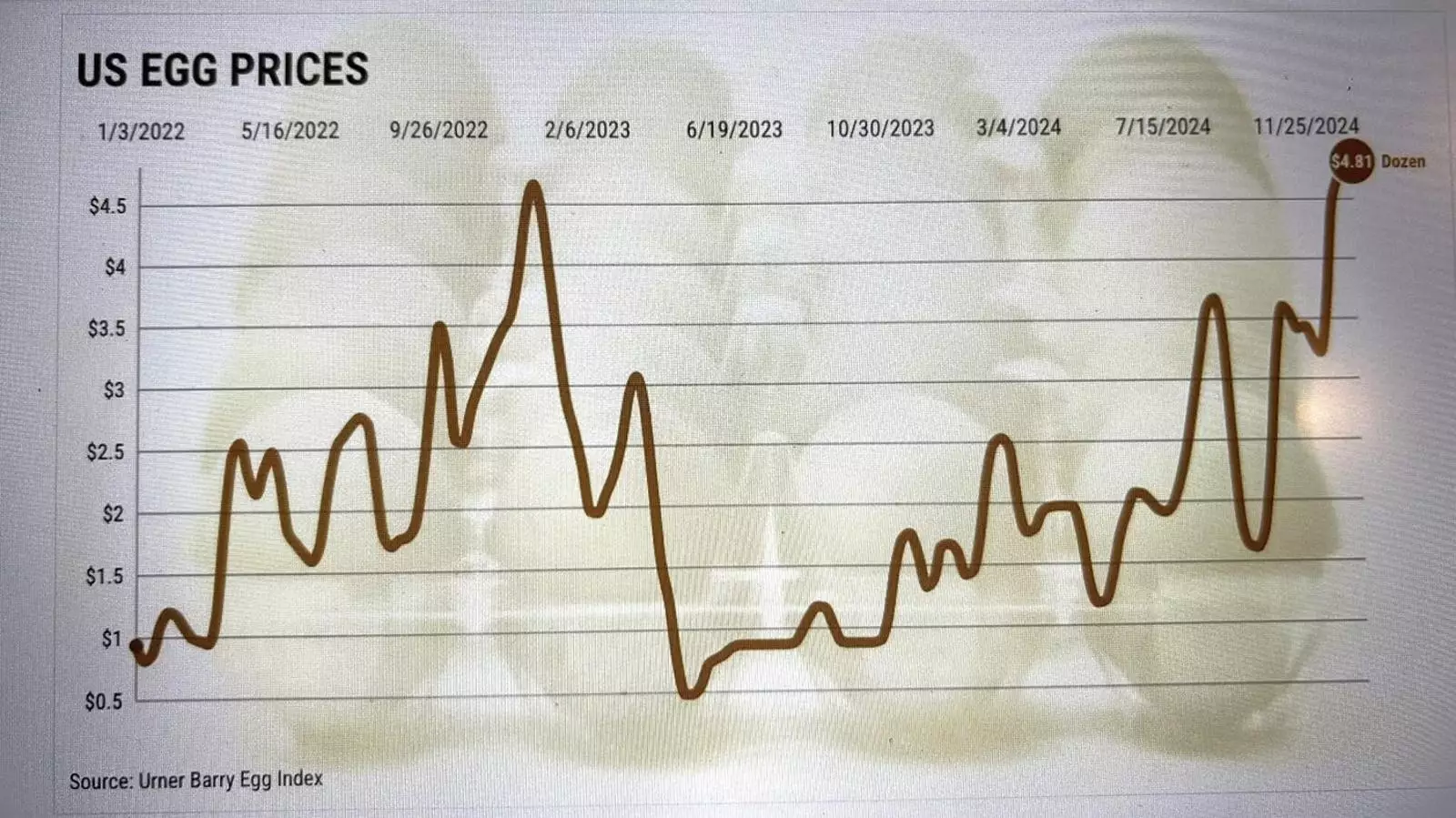The recent surge in egg prices has sparked significant debate among consumers, particularly as the cost of Garde A large eggs has soared to an average of $4.15 per dozen, a startling increase from last year’s $2.52. This represents a staggering 36.8% rise, prompting many to question the reasons behind this financial strain. While it is natural to focus on the immediate symbols of inflation, understanding the multifaceted economics of egg production necessitates a deeper examination – one that starts with the chicken itself.
For decades, the dilemma of “what comes first, the chicken or the egg?” has served as a philosophical quandary. Yet, in the realm of economics, it highlights the essential link between chicken availability and egg production. It is crucial to consider that it takes a hen approximately four and a half months to mature and begin laying eggs. This maturation phase can create significant lag times in response to market demand fluctuations. When demand surges faster than producers can respond, a temporary imbalance occurs, often leading to sharply increased prices as sellers try to manage consumer expectations.
However, the relationship between supply and demand is far more complex than simple availability. Various disruptions can exacerbate the situation, including environmental factors, market pressures, and unforeseen events.
The egg market does not operate in a vacuum. For instance, recent shifts in consumer habits demonstrate a noticeable shift from beef to poultry as a primary protein source. Coupled with other pressures such as climate changes affecting the availability of clean water and animal feed, the landscape becomes increasingly difficult for even the most seasoned farmers. The catastrophic impact of disease, notably the avian flu outbreak (H5N1) in 2022, further compounds this crisis. The loss of approximately 147.25 million birds nationwide has disrupted egg production significantly.
Given that the U.S. housed around 379 million egg-laying hens in 2024 (a modest increase of only 1% from previous years), the current metrics reveal a stark reality: nearly 39% of the flock had vanished due to disease. The average hen produces around 300 eggs annually, meaning that the loss of so many hens directly translates to a massive decrease in supply, which in turn fuels price increases.
Beyond the avian flu, farmers have grappled with over $73 billion in climate-related disasters from 2022 to 2024. From hurricanes to wildfires, the multifaceted challenges faced by growers extend beyond simple agricultural practices; they touch upon existential themes of climate resilience. The consequences of these disasters hold the potential to hinder agricultural output further, leaving both farmers and consumers grappling with higher prices.
As consumer demand persists, particularly leading up to consumer-centric occasions such as Easter, the outlook for egg prices appears bleak. The spread of avian flu continues to pose significant challenges, with reports of over 19.63 million birds affected across 29 states within just the past month, urging rapid culling efforts in an attempt to safeguard remaining flocks.
Experts predict that egg prices will likely rise more than 20% in the coming year, starkly contrasting the overall food inflation forecast of 2.2%. As we look towards the future, the intricate interplay of numerous variables suggests that the exponential growth of food prices could remain a persistent issue, particularly for items as staples as eggs.
Consumers must adapt to these evolving economic pressures. Staying informed about local market conditions, seasonal pricing, and promotional deals can alleviate some of the burden caused by these increases. Understanding the complexities underlying food prices not only fosters greater empathy for producers but also equips consumers to make informed economic choices as the specter of persistence inflation hangs over the food industry.
The escalating cost of eggs represents a microcosm of broader economic challenges. Recognizing the interconnectedness of supply chains, consumer behavior, and environmental factors is critical for navigating this landscape and preparing for future shifts in food economics.


Leave a Reply